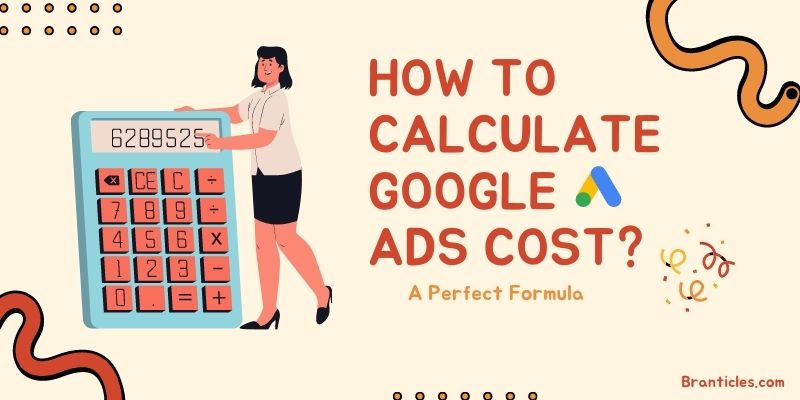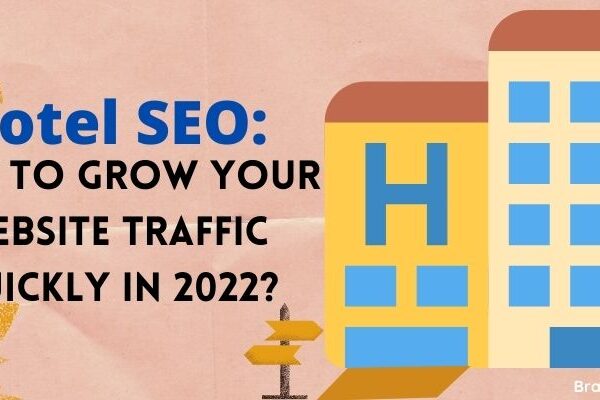How much will Google ads cost me?
Everyone is asking this question today because Facebook posts’ organic reach has declined to 5.20%. Also, Instagram’s organic reach is 20%, which is just a small relief.
But, overall, organic reach doesn’t hold that much power anymore. And to grow your business in 2022, paid Google ads are something that you need like your next breath.
So, here if you are new to PPC and have no clue how much Google Ads will cost, you have landed on the right post. This article will walk you through different aspects of Google Ads like—
- How much do Google Ads exactly cost?
- Which factors affect Google Ads cost?
- How do Google Ads work?
- How are Google Ads costs calculated?
- How to reduce your Google Ads cost?
So, let’s buckle up, people, as we are about to board a Google Ads cost flight…
How Much Do Google Ads Cost?
To be honest, there’s no exact cost to run Google Ads. There are so many different variables contributing to a Google Ads cost that no one can predict the exact cost.
Unless you define all your Google Ads variables, you can’t find the exact cost to run paid ads on Google. So, let’s go through each Google Ads cost contributing factor in detail.
Industry
The industry is one of the main factors that determine your cost per click (CPC) on Google Ads. Every industry has a different CPC rate, so you have to first check your industry rates and then calculate Google Ads.
As per the Wordstream Google AdWords Industry Benchmarks for 2020, AdWords CPC across all industries is $2.67 on the search network and $0.63 on the display network.

There’s no surprise that Google CPC rates are a bit higher. But “Lawyers” and “Attorney” are the top 10 most expensive keywords on Google. The legal industry is the costliest industry to run Google Ads for $6.75.
So, if you are a lawyer or legal consultant, you have to spend big bucks on Google Ads to grow your business. That’s because lawyers charge high fees, so Google makes them shed a few bucks on ads. It’s all fair.
In contrast, eCommerce platforms have to only pay $1.16 to run Google Ads due to heavy competition in the industry.
All in all, your industry plays a significant role in determining your Google Ads cost.
Geographical Location
The geographic location of your targeted audience also adds up to your Google Ads costing. Mostly, countries with high living expenses have higher Google CPC.
For example, the cost per click in the United States was $1.19 in 2020. On the contrary, Switzerland had $0.92 CPC at the same time. That’s simply because the cost of living is higher in the USA than in Switzerland.
The cost is further influenced by the areas and industry. Running an ad in metropolitan cities will be more expensive than B tier or C tier cities globally.
Also, the industry-wise Google keywords cost will change as per the location. For instance, the legal industry has a high CPC worldwide, but it ranks number three in the USA. The insurance sector wins in the USA.

Device Type
On which device you plan to run Google Ads also impacts its cost. The mobile CPC rate is mostly cheaper than the desktop, as you can see in this image.

As you can see, the average mobile CPC for a digital ad was $0.42, and a single desktop click cost $0.73 in 2019.
Trends
Obviously, trending Google ad keywords will cost you more. This phenomenon is similar to traditional advertising, where publishing ads in popular newspapers or magazines will cost you higher.
For example, during the pandemic, many industries have seen positive CPC growth and some negative. The apparel industry saw a huge increase because people started shopping online more compared to pre-COVID-19 time.

Similarly, due to the global travel restrictions, people less preferred to travel these days, so the travel and tourism industry CPC went down.

In short, running ads on trending keywords will cost you higher compared to non-trending keywords.
Additional Costs
Besides these common Google Ads cost factors, many other costs impact your digital ad budget, such as:
- PPC Agency: To plan, monitor, and analyze your Google Ads, you need to hire a PPC agency. And this cost is not included in your Google Ads cost; you have to pay extra for service costs that vary from company to company.
- PPC Management Software: Google Keywords Planner and Ads are free to use. But if you want to effectively manage your multiple ad campaigns, you might have to invest in other paid tools like WordStream, Shape, or Acquisio.
- Ad Schedule: For how many hours you want to run Google Ads also impact its cost. Ideally, run ads for the time frame when your business is open, like 9 to 5.
- Customer Cycle: The longer your customers reach the final decision-making process, the higher your CPC will be.
How Do Google Ads Work?
As you have seen, calculating Google Ads cost isn’t at all an easy job. This is because there are so many factors that constantly change Google’s CPC rate. Thus, you should understand how Google Ads works to better calculate its cost.
Google Ads functions like an auction system.
How so?
Well, let’s imagine you searched for the “best laptop” in the Google search bar. Now, Google will search if your query contains the keywords on which advertisers are bidding currently.
If the advertisers are bidding on your query-based keywords, the auction begins. Google will next check each contender ads’ Ad Rank and determine where each ad will be placed in the paid results. For example, look at this search result for the “laptop” key phrase:

Here Dell’s ad is ranked above the Amazon ad because its Ad Rank is better.
Google calculates Ad Rank for each ad by multiplying maximum bid to Quality Score.
A maximum bid is the highest amount you are willing to pay for the click per cost to Google.
Quality Score is a bit complex term for which Google considers many things, such as:
- Expected clickthrough rate (CTR): It is a projection that your ad will be clicked when shown.
- Ad relevance: It shows how closely your ad matches the user’s keywords intent.
- Landing page experience: How much value your landing page offers to the users who click on it.
How to Calculate Google Ads Cost?
As you now know how Google Ads work, you are ready to calculate the cost for each Google Ads campaign. Here’s the simple Google Ads cost formula:
Ad Rank x Quality Score + $0.01 = Ad Price

If you observe the image, you will notice that Advertiser 1 had spent less than Advertiser 4 and still had a higher position. And that is the magic of Quality Score, marketers.
In a nutshell, if your ad’s quality isn’t up to the mark, no matter how much you spend on Google Ads, you will get no results.
Therefore, you should focus on your ad relevance, user-friendliness, and keyword structure to improve your ad’s Quality Score without increasing your CPC.
And this takes us to the final topic, “how to gain maximum ROI from your minimal Google Ads budget?”
Tips to Audit your Google Ads Budget
Are your Google Ads campaigns draining out your bank account? Then, you don’t need to cut your Google Ads efforts. Instead, you simply need to audit your Google Ads budget and do some cost-cutting, such as:
Analysis your keywords
First of all, take a look at your keywords report and find underperforming keywords.
This way, you can allocate your money to the keywords that actually bring in sales.
Google Keywords Planner can help you arrange the keywords by conversion costs.
From here, you can observe the keywords that offer minimum and maximum conversions. So, you can use your Google Ads budget to target the high ROI keywords.
Reduce your ad time
As we all know, time is money. Google Ads also believes in this. So, if you are spending ten hours on ads, you can reduce it to half and free up tons of room in your budget.
Suppose you run Google ads for your bakery, which is only open from 8 am to 5 pm. So, you should run ads for those hours only when your bakery is open. There’s no need to run an ad 24 hours when your business is only open for 9 hours.
Reshuffle your budget
Another solid way to generate maximum ROI from your Google Ads budget is to reshuffle your ad budget.
If you are running ads on Facebook, Instagram, or other platforms simultaneously, analyze which platform offers you the maximum results.
And then, simply spend most of your ad budget on that platform.
This trick applies to all advertising platforms, not only Google Ads.
Reduce spending on SaaS tools
Advertisers use numerous tools today to run digital ad campaigns, such as:
- Keyword research tools
- Performance monitoring tools
- Social scheduling software, etc.
In short, today, marketers use software for everything. Some of the popular marketing tools are Mailshake, Slack, Moz, MonsterInsights, and many more.
Now, if you want to free up your budget, you can let go of non-essential tools or substitute them for free alternatives. Even if you free $50 in your budget, it is sufficient for Google Ads to bring some leads your way.
Keep a Close Eye on Google Ads Cost
When exploring Google Ads like a platform, it is important to keep an eye on the money.
With one wrong move, you can exhaust all your advertising budget in the blink of your eye.
Therefore, calculate your Google Ads cost before launching an ad campaign. Further, you can allocate your budget to the high-performing keywords, locations and hire a professional PPC agency to help you out.
All in all, first test Google Ads with a small budget and then gradually increase your spending.
That’s it for now in this post! Now the floor is all yours. Create your Google Ads campaign and share your experience with us in the comments.





The next time I read a blog, Hopefully it doesnt disappoint me just as much as this one. I mean, Yes, it was my choice to read, but I really believed youd have something interesting to talk about. All I hear is a bunch of moaning about something that you can fix if you werent too busy seeking attention.